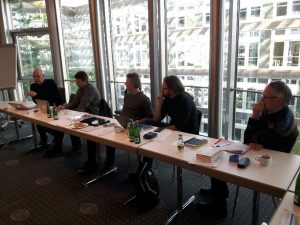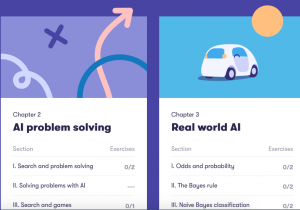Presenting my contributions to TACCLE4 CPD project – Part Three: Reflections on using Open Educational Resources in Vocational Education and Training
In my previous post I have given an overview of the reports for our ongoing TACCLE4 CPD projects that I had completed so far. At the end I mentioned that the next one to be completed would be Report3 on the use of Open Educational Resources (OER). This week I have worked on this report. I have had the great pleasure to have my ITB colleague Jan Naumann with me as an expert in this matter and as a co-author. So, the best thing for me to do was to explore with him different contexts of vocational education and training in which he has been working with OER. Below I present the conclusions of our report.
Conclusions: Using Open Educational Resources in Vocational Education and Training
Here it is worthwhile to note that this report has not the aim to give a comprehensive overview on Open Educational Resources (OER) that may have relevance for vocational education and training (VET). Such a task would no longer be manageable. Currently there is such a richness of OER – also ones that address explicitly the field of VET. As a contrast, this report has provided insights into exemplary cases of using OER to enhance vocational teaching/learning arrangements and to empower vocational learners.
Also, concerning the range of occupational fields that these cases cover, the report is far from comprehensive. Yet, when looking more closely at the cases, there is a pattern variance and a gradual shift from rather simple cases to more complex vocational teaching/learning arrangements. In a similar way the degree of using OER grows from elementary engagement to specific interventions and to more complex incorporation of OER into vocational learning culture.
In a nutshell the key messages of the above-presented cases can be summarised in the following way:
- Rather simple and elementary vocational learning exercises can be transformed into creative learning projects. This is the case, when the learners are challenged to think, what they can achieve with the results (products) they produce. The first case in which the learners produce their own tools underlines this point. Individual teachers who create such learning projects can become producers of OER.
- Hitherto separate subject areas and learning projects can be linked to each other with the help of OER. This may happen with the help of hands-on exercises using Open Resources and quiz exercises using OER. The second case of integrated learning paths underlines this point.
- Neighbouring occupations can be brought together with the help of OER to work with a joint learning project if it is sufficiently challenging and interesting to all parties involved. The third case with an integrated working and learning project with robotics serves as a demonstration.
- Vocational learning arrangements can be made attractive to apprentices and to trainees in pre-vocational education (also with socially disadvantaged background). The fourth case with the complex teaching-learning arrangement around organising a series of Go-kart races provides an example of this. Here, by organising learners as occupational teams and bringing the contributions of teams to a common effort the learners worked for a common goal. This was facilitated by manifold use of OER and by documenting the whole concept as OER.
Altogether, the cases are selected examples and they do not provide evidence that the use of OER as such would guarantee successful learning. Yet, they have given insights into the prospect of shaping of vocational teaching/learning arrangements as creative learning spaces.
—
I guess that this is enough of our report on the use of OER. What remains to be done for the project is a final report on shaping continuing professional development (CPD) to promote digital competences of vocational teachers and trainers. There I need to highlight the challenges, ideas and ways forward that have been discussed in the previous four reports.
More blogs to come …





